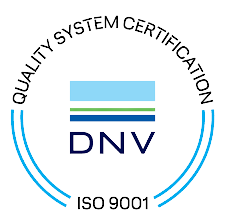
Let’s get to know the concept of a temperature logger
A temperature logger helps in storing data over a long or short period for the researchers to accumulate data. Be it understanding the humidity or temperature of the space, the temperature logger helps to record all the alterations in the environment. It has internal or sometimes external sensors usually with just a small battery supporting it to accept inputs. This is usually used by multiple departments including sterilizing surgical instruments to understand the heating logs before canning the food.
Best practices while setting up a temperature logger
The process of setting a temperature logger is a very important part to ensure accurate logging by the logger. Here are a few steps that can ensure accuracy while logging temperature-
-
Setting and configuring the logger
You have to always consider the sample rate. We always end up choosing a faster sample rate which is not always required and also not even an option to consider while logging the data. The most appropriate sample rate is always a range between 15 to 30 minutes as this range helps in measuring the threshold data rightly even when you have high sensitivity or lower sensitivity. It is suggested that you always set the alarm keeping in mind the time you need to react while in hurl. One has to understand the concept of hard and close limits. Your ability to react is directly proportionate to the limits you set. If the time of reaction is shorter the alarm needs to be set at a close limit wherein when the ability to react is longer, the alarm needs to be set at hard limits.
-
Positioning the temperature Probe
Positioning of the probe is extremely important as it needs to be placed at a location where it can catch the accurate temperature of the product placed in cold storage. Sometimes placing the probe wrongly can lead to a disruption of the airflow causing a major fluctuation in the temperature. One can always use a thermal buffer to help regulate the temperature. In situations when there is a sudden change in the temperature due to an unwanted air rush resulting in temperature change by the cavity. This is when you need a thermal buffer to control the logger from the sensor tip.
-
Are you checking the alarm beforehand?
You have to always ensure that your alarm is rightly placed and keep a double check on the receiver information. If there is an emergency hazard and the information of the receiver is incorrect, this can lead to loss of the material.
-
How does a new system work?
You have to keep in mind that a new system goes through new activities involving temperature and so keeping a regular interval check is extremely important. Depending on the need you have to make customized edits in the alarm to avoid discrepancy.
Lastly, it is extremely important to understand the importance of calibrating the monitoring data by comparing it to NIST standards to ensure accuracy.






